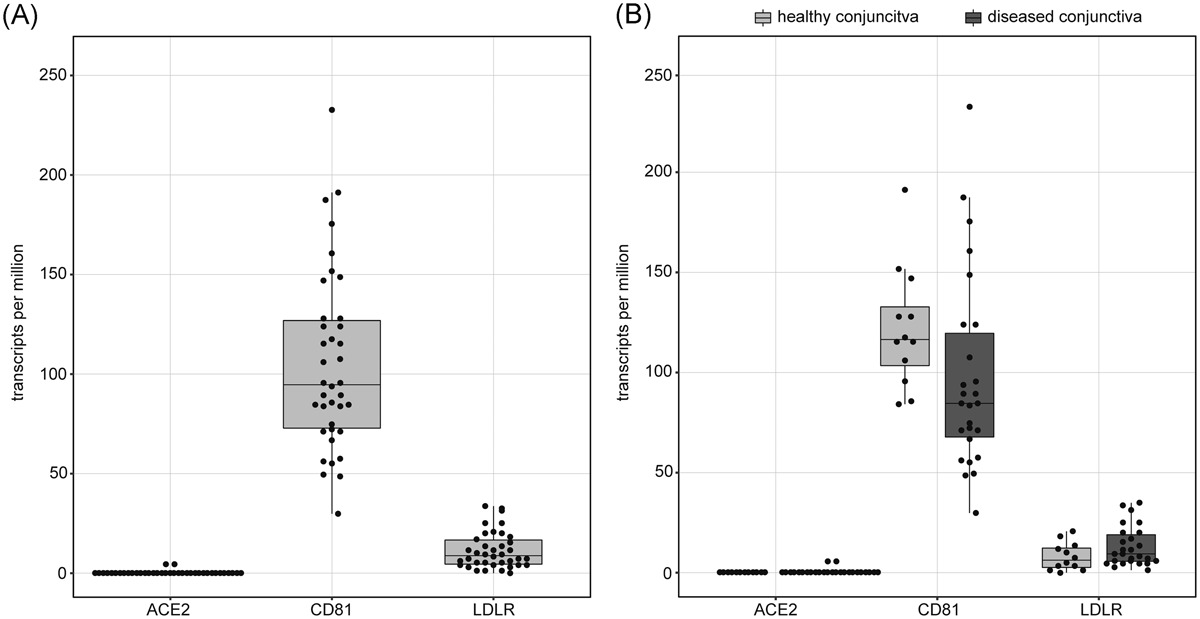
Journal of Medical Virology (2020)
Clemens Lange, Julian Wolf, Claudia Auw-Haedrich, Anja Schlecht, Stefaniya Boneva, Thabo Lapp, Ralf Horres, Hansjürgen Agostini, Gottfried Martin, Thomas Reinhard, Günther Schlunck
Number of citations (crossref.org): Loading....

SARS-CoV-2 is assumed to use angiotensin-converting enzyme 2 (ACE2) and other auxiliary proteins for cell entry. Recent studies have described conjunctival congestion in 0.8% of patients with laboratory-confirmed severe acute respiratory syndrome coronavirus-2 (SARS-CoV-2), and there has been speculation that SARS-CoV-2 can be transmitted through the conjunctiva. However, it is currently unclear whether conjunctival epithelial cells express ACE2 and its cofactors. In this study, a total of 38 conjunctival samples from 38 patients, including 12 healthy conjunctivas, 12 melanomas, seven squamous cell carcinomas, and seven papilloma samples, were analyzed using high-throughput RNA sequencing to assess messenger RNA (mRNA) expression of the SARS-CoV-2 receptor ACE2 and its cofactors including TMPRSS2, ANPEP, DPP4, and ENPEP. ACE2 protein expression was assessed in eight healthy conjunctival samples using immunohistochemistry. Our results show that the SARS-CoV-2 receptor ACE2 is not substantially expressed in conjunctival samples on the mRNA (median: 0.0 transcripts per million [TPM], min: 0.0 TPM, max: 1.7 TPM) and protein levels. Similar results were obtained for the transcription of other auxiliary molecules. In conclusion, this study finds no evidence for a significant expression of ACE2 and its auxiliary mediators for cell entry in conjunctival samples, making conjunctival infection with SARS-CoV-2 via these mediators unlikely.